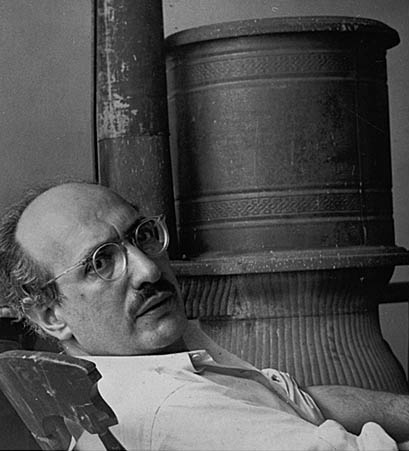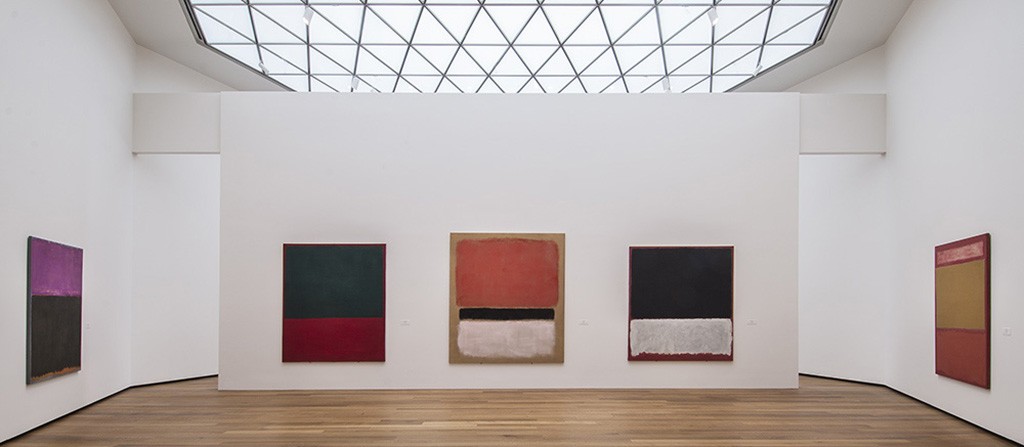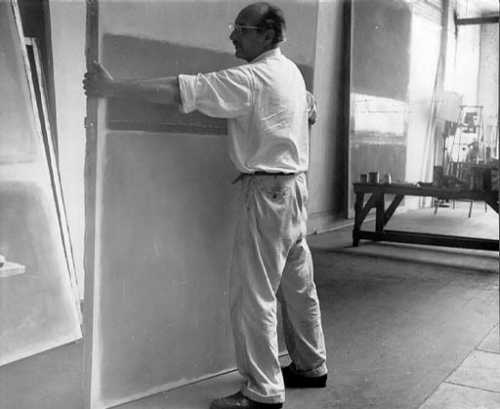Mark Rothko (1903 – 1970)

Mark Rothko in his West 53rd Street studio, c. 1953, photograph by Henry Elkan, courtesy Archives of American Art, Smithsonian Institution, Rudi Blesh Papers
One of the preeminent artists of his generation,
Rothko's work is characterized by rigorous attention to formal elements such as color, shape, balance, depth, composition, and scale; yet, he refused to consider his paintings solely in these terms. He explained: "It is a widely accepted notion among painters that it does not matter what one paints as long as it is well painted. This is the essence of academicism. There is no such thing as good painting about nothing."


